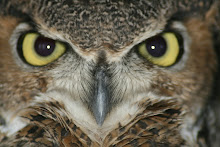Here is the surgical story of the Bald Eagle from our partners at Gentle Vet Animal Hospital...
Friday, February 12 was a typical day at Gentle Vet Animal Hospital until the staff of the Bay Beach Wildlife Sanctuary arrived with an injured bald eagle. The bird had been hit by a vehicle in the Crivitz area. She was very weak, and did not put up much of a fight, which is not normal for eagles, even sick ones!
Dr Gray was concerned that this bird might have multiple injuries, and could also have other health conditions which had weakened her so that she wasn’t able to avoid the passing car. He and the technicians gave the eagle a complete physical exam, and collected a blood sample for  testing in our laboratory. Dr. Gray found a severe wound to the eagle’s left elbow; most of the skin had been peeled away.
testing in our laboratory. Dr. Gray found a severe wound to the eagle’s left elbow; most of the skin had been peeled away.
 testing in our laboratory. Dr. Gray found a severe wound to the eagle’s left elbow; most of the skin had been peeled away.
testing in our laboratory. Dr. Gray found a severe wound to the eagle’s left elbow; most of the skin had been peeled away. View of left wing xray
view of right wing fracture
X-rays showed another serious problem; there was a fracture of the lower part of the radius bone in the right wing, just above the wrist. The skin was not broken in this area, which was good news. But in order to fly well, eagles must have nearly perfect function of their wings, and the fracture was close to the joint.
By the time the exam and x-rays were done, the blood results were also finished. We could see that the bird had no signs of internal bleeding, and no organ damage. This was good news, but we still had a very shocky bird.
Dr Gray considered the options, and decided that the best course would be to stabilize the eagle for a few days, then perform surgery to close the skin wound and repair the fracture. He prescribed antibiotics and pain medication, and bandaged the eagle’s wounds. The bird returned to the Wildlife Sanctuary for treatment over the weekend.
On Monday, February 15, we were delighted to see a much stronger eagle! The bird was much more difficult to handle, which is a good sign for her, but a challenge for the staff! Dr. Gray anesthetized the eagle, placed an intravenous catheter, and had her prepped for surgery. All during the surgery, Cindy, a Certified Veterinary Technician, monitored the eagle’s vitals signs and controlled the gas anesthesia. After an hour and a half, the eagle was sporting four stainless steel pins in her broken radius, and the wound on the other elbow had been closed. It took thirty stitches just to close that wound!
Things are looking good, but we are in the difficult “watching and waiting” period. The bird looks great, but it will be several more days before we know how well the skin wound heals, and several weeks before we can tell how well the fracture heals. Dr Gray is continuing to monitor her closely, and we’ll keep you posted on her progress!
The Staff of Gentle Vet Animal Hospital
By the time the exam and x-rays were done, the blood results were also finished. We could see that the bird had no signs of internal bleeding, and no organ damage. This was good news, but we still had a very shocky bird.
Dr Gray considered the options, and decided that the best course would be to stabilize the eagle for a few days, then perform surgery to close the skin wound and repair the fracture. He prescribed antibiotics and pain medication, and bandaged the eagle’s wounds. The bird returned to the Wildlife Sanctuary for treatment over the weekend.
On Monday, February 15, we were delighted to see a much stronger eagle! The bird was much more difficult to handle, which is a good sign for her, but a challenge for the staff! Dr. Gray anesthetized the eagle, placed an intravenous catheter, and had her prepped for surgery. All during the surgery, Cindy, a Certified Veterinary Technician, monitored the eagle’s vitals signs and controlled the gas anesthesia. After an hour and a half, the eagle was sporting four stainless steel pins in her broken radius, and the wound on the other elbow had been closed. It took thirty stitches just to close that wound!
Things are looking good, but we are in the difficult “watching and waiting” period. The bird looks great, but it will be several more days before we know how well the skin wound heals, and several weeks before we can tell how well the fracture heals. Dr Gray is continuing to monitor her closely, and we’ll keep you posted on her progress!
The Staff of Gentle Vet Animal Hospital






